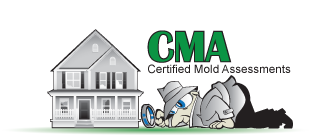 Mold is one of those thing most of us see in a given week. We might see it on a loaf of bread, a package of strawberries, or a stack of old magazines. It seems relatively harmless in these cases, and it’s difficult to imagine a full-scale mold invasion that could affect your health or bring down your property values. But make no mistake – mold can be dangerous.
Mold is one of those thing most of us see in a given week. We might see it on a loaf of bread, a package of strawberries, or a stack of old magazines. It seems relatively harmless in these cases, and it’s difficult to imagine a full-scale mold invasion that could affect your health or bring down your property values. But make no mistake – mold can be dangerous.
In fact, the people who are most directly exposed to the dangers of mold are often the professionals whose job is to remove it. The extent of the infestation is often much more dramatic than what can be seen with the naked eye – and when a profession gets up close and personal with all of those millions of mold spores, the levels of exposure can be downright dangerous.
What does this mean? It means that protection is absolutely vital for mold remediation professionals. Assessing, testing and removal mold without the proper protective gear – and doing it day after day – would be outright crazy. Any legitimate professional will err on the side of caution when it comes to protective gear.
So what kind of protection do mold remediation professionals use in particular?
That depends on what kind of mold professional you’re talking about. If it’s a reputable contractor with years of experience, you’ll notice several types of protection. The first, and perhaps most important, line of defense is respiratory protection. This specialty item (called a particulate respirator) covers the nose and mouth, and prevents toxic mold spores from entering the body through the respiratory system. The worst mold-related illness occur due to the breathing in of toxic mold spores, so this is a particularly important precaution for professionals to take.
The next thing you’ll notice is a full-body suit, gloves, and eye protection. During a mold remediation project, or even during a mold inspection, the quantity of mold spores can be highly toxic. Protecting the entire body is important, since mold can cause skin rash and other health problems in addition to respiratory disorders.
Mold professionals deal with toxic levels of mold on a regular basis, but they can never get careless when it comes to safety. Knowing the extreme precautions taken by professionals should make homeowners even more careful when they attempt DIY mold removal of any kind.
Keeping yourself protected from mold
When it comes to dealing with an existing mold invasion, protective gear is an absolute must. But the very best protection from mold is always prevention. By understanding the environmental conditions mold needs in order to grow and thrive, homeowners can stay one step ahead and prevent infestations from occurring in the first place.
But whether or not you think you have a mold problem, it can bring extra peace of mind to call in a professional for a full mold assessment and mold testing regimen. If there is a problem, you’ll know exactly how to deal with it. And if not, you’ll have extra peace of mind – and extra incentive to prevent mold from infesting your home.
